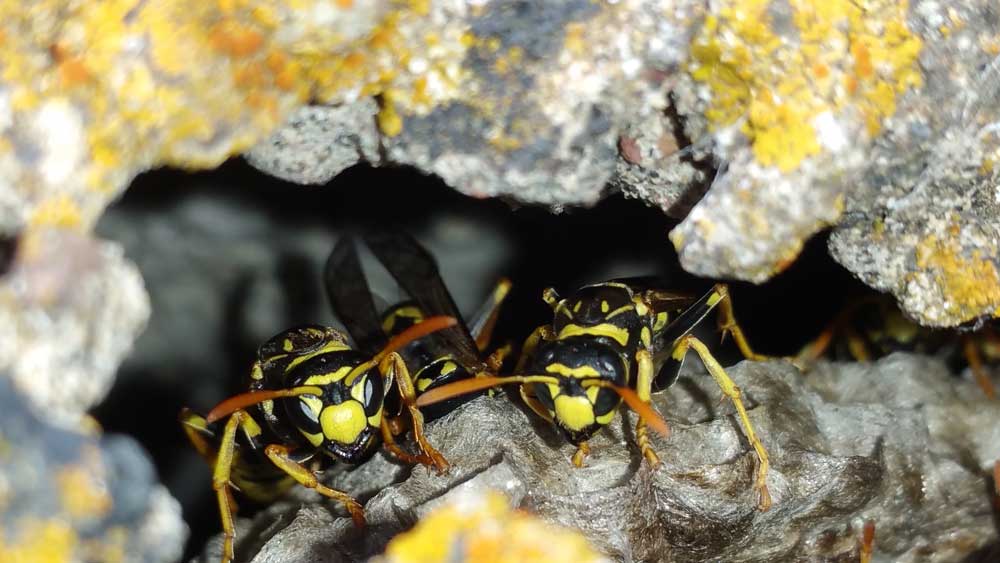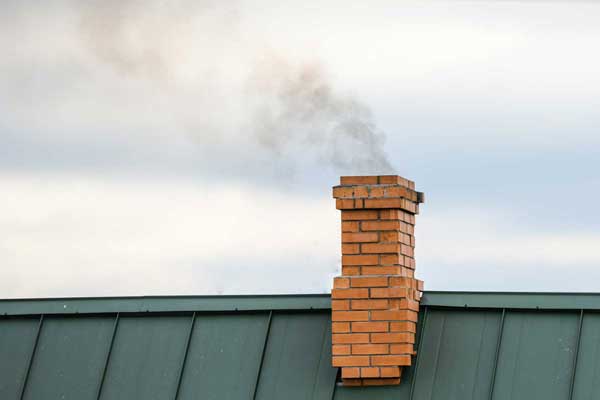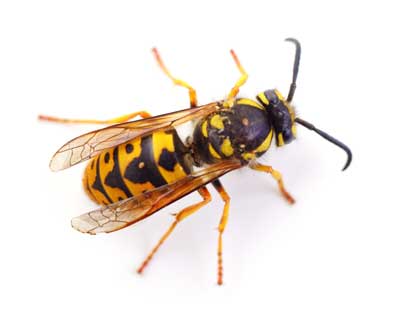Wasp Nest in Chimney: Safe Removal
A wasp nest in chimney spaces is more common than many Irish homeowners realise, especially during spring and summer when these warm, dry flues become prime real estate for nesting wasps. These warm, dry, and often undisturbed spaces are ideal locations for wasps, especially during the spring and summer breeding season. While the nest itself may be hidden, the impact is not. From buzzing and blocked flues to serious stings, wasps in your chimney pose risks you can’t afford to ignore.
In this guide, we explain why chimneys attract wasps, how to spot an infestation early, the dangers involved, and how to remove a wasp nest in chimney spaces safely and effectively. Whether you’re in a residential property or managing a business with a fireplace or flue system, the advice here can help you take smart, safe action.

Why Wasps Nest in Chimneys
To a wasp queen searching for a quiet, sheltered place to start her colony, your chimney is perfect. The internal structure provides a dry environment, protection from predators like birds, and limited human disturbance. Chimneys also retain warmth, especially if connected to unused stoves or fireplaces, which helps wasps survive and thrive in the early months of nesting.
Here are the main reasons wasps choose chimneys:
-
- Shelter from wind and rain: Chimney stacks are raised off the ground and built to keep the elements out, making them ideal for early nest formation.
-
- Structural cavities: Gaps behind chimney liners, unused flues, or insulation pockets offer secure nesting spaces.
-
- Low activity: Many chimneys aren’t in use for months at a time, particularly outside the heating season.
-
- Vertical height: Chimneys are harder for natural predators or curious pets to access, giving the colony more safety.
While not all wasps will choose chimneys over attics or sheds, when they do, nests can be hard to detect and even harder to reach.
In some cases, a chimney infestation can lead to a nearby wasp nest in soffit areas or even a wasp nest in roof tiles, especially if the original nest is left undisturbed.

How to Know If You Have a Wasp Nest in Your Chimney
Wasp nests in chimneys can go unnoticed until the colony grows or wasps begin entering your home through the fireplace or vents. Some nests are located above the chimney pot, while others may form inside the flue or in the chimney breast itself.
Here are the most common signs:
-
- Buzzing from inside the chimney: A continuous or occasional buzzing sound coming from the fireplace or chimney cavity is a strong indicator of wasp activity.
-
- Wasps are flying near the chimney pot: You may see a steady pattern of wasps flying in and out of the top of the chimney, especially during daylight hours.
-
- Wasps are appearing in the fireplace or stove: If wasps are emerging inside your home, even in small numbers, they may be finding their way down from a hidden nest.
-
- Nesting material or debris in the hearth: In rare cases, papery bits of nest material may fall into the grate or stove if the nest has been disturbed.
If any of these signs appear, it’s important to act quickly. Delaying the issue allows the colony to grow, increasing both the difficulty and danger of removal.
The Dangers of a Wasp Nest in a Chimney
A wasp nest in chimney spaces isn’t just inconvenient, it poses real health and safety risks.
-
- Aggressive behaviour during the breeding season: Wasps are protective of their nests and may swarm if they sense vibrations or disturbances from chimney inspections or nearby noise.
-
- Risk of stings: Wasps can enter the home through vents, open fireplaces, or minor cracks in the chimney breast. Multiple stings can be dangerous, especially for those with allergies or young children.
-
- Smoke obstruction: If the chimney is used while a nest is present, smoke may be blocked or back up into the property, causing fire and health risks.
-
- Structural damage: Nests built over time can affect flue liners, insulation, or chimney pots. Dead wasps or nest material can cause clogs that require professional chimney cleaning.
-
- Reinfestation: If a nest is not fully removed, wasps may return to the same location the following year. Chimneys often become repeat targets once a queen has successfully nested there.
These nests can also form during peak wasp breeding season, making early detection and removal even more critical to avoid long-term infestation.
Safe Removal of a Wasp Nest in the Chimney
Dealing with a wasp nest in chimney flues or stacks is not a safe DIY task. The height, enclosed space, and aggressive nature of wasps make it a job best left to professionals. That said, here’s what you can and shouldn’t do:
What You Should Do
For homeowners interested in eco-friendly options, there are also natural wasp removal methods, although these should only be considered in low-risk, accessible cases.
-
- Close the fireplace and vents: Seal off access points inside your home to prevent wasps from entering. Use tape or a solid cover over the grate if needed.
-
- Avoid lighting a fire: Do not attempt to smoke out the nest. This rarely works and can backfire by agitating the colony or causing smoke damage.
-
- Observe activity from a distance: Watch for wasp traffic around the chimney pot to help pest control locate the nest later.
-
- Call a licensed wasp control expert: Professional pest controllers can use safe, chimney-specific treatments like insecticidal dusts delivered directly into the flue from the top.
-
- Arrange a follow-up inspection: After removal, have your chimney professionally cleaned and inspected to confirm that all material and debris have been cleared.
What You Shouldn’t Do
-
- Don’t climb on the roof to inspect or spray it’s dangerous and may provoke wasps.
-
- Don’t use general bug spray, it won’t reach deep nests and may make the wasps more aggressive.
-
- Don’t ignore it; wasps won’t leave on their own until the season ends, and nests get bigger over time.
Summary
A wasp nest in chimney spaces can pose serious risks to people, property, and safety. These hidden infestations often go unnoticed until wasps start entering your home or the nest disrupts the chimney’s function. Spotting early signs like buzzing, wasp traffic, or chimney debris is key. Attempting to burn, block, or spray the nest on your own is not only ineffective it can be dangerous. Professional removal is the safest option, followed by preventative measures like mesh caps, regular inspections, and seasonal awareness. Taking the right steps now helps you avoid bigger problems later.
For more on identifying wasp colonies in unusual locations, see our guide on how to remove a wasp nest safely and effectively.
contact form
Get Expert Help Before It Becomes a Bigger Problem
If you suspect a wasp nest in chimney vents or flue systems, don’t wait for it to spread indoors. These hard-to-reach infestations pose real risks to your health, safety, and property.
For fast, discreet, and guaranteed wasp nest removal, call 087 254 2839 or book online today. Our team serves Dublin, Meath, Kildare, and Louth with expert care and proven solutions.
